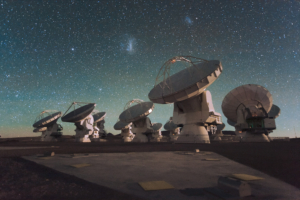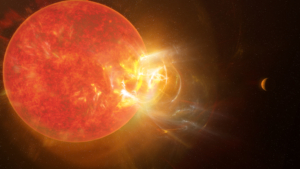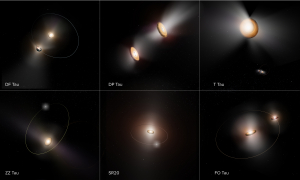The ALMA Observatory, in collaboration with its partners, the National Astronomical Observatory of Japan (NAOJ), the European Southern Observatory…
Astronomers Discover “Space Tornadoes” Around the Milky Way’s Core
Swirling through the Milky Way’s central zone, in the turbulent region surrounding the supermassive black hole at the core…
Hidden Cosmic Fuel Tank Found in Infant Galaxy Cluster
Astronomers using the Atacama Large Millimeter/submillimeter Array (ALMA), along with complementary data from the Atacama Pathfinder Experiment (APEX), have…
Small Star, Mighty Flares: ALMA Shares New View of Proxima Centauri
At a distance of just over four light years, Proxima Centauri is our nearest stellar neighbor and is known…
Double the Disks, Double the Discovery: New Insights into Planet Formation in DF Tau
Tucked away in a star-forming region in the Taurus constellation, a pair of circling stars are displaying some unexpected…
Young Stars in the Milky Way’s Backyard Challenge Our Understanding of How They Form
Astronomers have made groundbreaking discoveries about young star formation in the Large Magellanic Cloud (LMC), using the James Webb…











